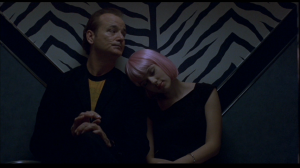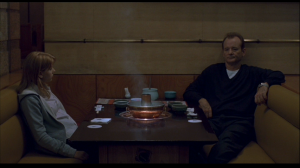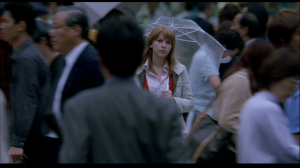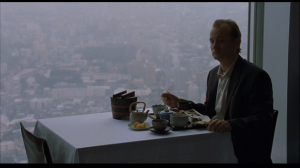After watching Amy Heckerling’s Clueless as part of the #52FilmsByWomen pledge, I decided to revisit her debut, Fast Times at Ridgemont High, which is considered a cult classic and launched the careers of many actors including Jennifer Jason Leigh and Sean Penn.
Directed: Amy Heckerling
Starring: Jennifer Jason Leigh, Phoebe Cates, Brian Backer, Robert Romanus, Judge Reinhold, Sean Penn, Ray Walston

source: Youtube
Amy Heckerling is one of a very select group of women who has managed to forge a lasting career in mainstream cinema, and this is no doubt largely due to the strength of her debut. Fast Times at Ridgemont High is a staple of the teen genre, featuring an ensemble of then up and comers who are now some of Hollywood’s most respected players.
The 1982 film, written by Cameron Crowe, is based on his non-fiction book of the same name, which he wrote after going undercover at Clairemont High School in California. The film has only a loose narrative, telling the tales of a number of High School students over the course of a school year.

source: Born Unicorn
Characters include 15 year old Stacy (Jennifer Jason Leigh), who is looking to lose her virginity and taking the advice of her older friend, the more experienced Linda (Phoebe Cates). Mark “Rat” Ratner (Brian Backer) admires Stacy from afar and takes dating advice from his own older friend Damone (Robert Romanus), whilst Stacey’s older brother Brad (Judge Reinhold) navigates a series of part time jobs. The film also follows stoner Jeff Spicoli (Sean Penn) as he gets engaged in a battle of wits with history teacher Mr. Hand (Ray Walston).
Sean Penn is hilarious as perpetually stoned Jeff Spicoli and has no doubt inspired every similar character to appear in a film since, including Travis (Breckin Meyer) in Clueless, who is essentially just a more self aware and 1990’s variation of Spicoli. Even his stoner/surfer style has become iconic, with his character being largely responsible for the enduring popularity of Vans slip-on shoes.

source: Oyster
It is Penn’s performance that remains the most enduring and popular, with stories of how he stayed in character throughout shooting and would only answer to the name Spicoli becoming popular trivia, but the excellent turns from the rest of the cast is not to be ignored.
Jennifer Jason Leigh is a standout as Stacy, communicating the dual sense of braveness and vulnerability of exploring sexuality for the first time, whilst Pheobe Cates is also amusing as the older friend whose every word is lapped up by Stacy in spite of the fact she clearly isn’t all that sure what she is talking about. Each character is relatable in some way, especially Mark, who was based on Andy Rathbone, who has gone on to become the successful author of the For Dummies book series.

source: Best Movies By Farr
Other stars to be to look out for include Nicolas Cage (credited as Nicolas Coppola) and Forest Whitaker in their respective feature film debuts, as well as Eric Stoltz as a stoner buddy of Spicoli’s.
It is a credit to Heckerling’s direction that the film never feels meandering in spite of the loose narrative, and we come out feeling like every character has been on a journey of some sort. The film doesn’t shy away from exploring serious issues such as sexuality and abortion, and it probably has more in common with the raunch-fest Porky’s (1981) than the John Hughes classics of the decade.

source: Spirit of the Thing
The film is so on the nose about these issues in fact that it has sometimes drawn criticisms for sexism – Roger Ebert gave the film one star in his review and described it as:
“a failure of taste, tone and nerve – the waste of a good cast on erratic, offensive material that hasn’t been thought through, or maybe even thought about.”
Ebert also denounces the film as sexist and bordering on sexploitation, and it has been debated for years whether or not Heckerling’s film is sexist. There is a plenty to suggest that it may be – particularly the famous swimming pool scene starring Cates – but the film is actually a very rare example of sexuality as portrayed largely from the female perspective.

source: Youtube
This is clear at many points throughout the narrative, but is most obvious through the character of Stacy. When she gets pregnant she decides to have an abortion and Heckerling explores this in a wholly realistic way. There is no judgement, or even any debate, it is merely shown and the film ends in a way that suggests that Stacy learnt something and moved on, as is the case with many teenagers.
In her book It’s A Jungle Out There: The Feminist Survival Guide to Politically Inhospitable Enviroments, Amanda Marcotte argues that the film is a very positive and female orientated depiction of the High School experience, saying it:
“…doesn’t romanticise high school from the point of view of a middle-aged man, but shows it as it is in all it’s cringworthy, immature nonglory.”

source: Movie Fan Central
In spite of the John Hughes dig, Marcotte does raise an interesting point about the film – whilst we see Stacy explore her sexuality, her encounters are far from the overblown and unrealistic depictions of sex usually put to the screen, and are much more reflective of real life experiences as had by many.
The film, like any great teen movie, also boasts a fantastic soundtrack which serves as proof that a pop music can have just as much impact as a traditional film score. From the opening track We Got the Beat by The GoGo’s it is clear that Heckerling has a talent for encapsulating contemporary youth culture, and the soundtrack features an array of brilliant tracks from the likes of The Eagles and Stevie Nicks.

source: Zebra Tiger Fish
Fast Times at Ridgemont High is a time capsule to the 1980’s, infused with a little more grit than the sugary sweetness of John Hughes, but with enough brains to still be feel-good, it inspired generations and films such as Dazed and Confused (1993) and many more would not exist without it.
What do you think of Fast Times at Ridgemont High? Which films are you watching as part of #52FilmsByWomen? Share your views in the comments section!






















 I have begun my
I have begun my  Made on a budget of just $4 million, the film tells the story of Bob Harris (Bill Murray), an ageing actor who is in Tokyo filming a whisky commercial for the tidy sum of $2 million, and Charlotte (Scarlett Johansson), a recent philosophy graduate who is staying in the city whilst her husband (Giovanni Ribisi) is shooting on location. The pair, who are staying in the same hotel, form a bond over their mutual sense of isolation and sense of dissatisfaction with life. It’s an endearingly simple concept that transcends time, age, social class or any other distinguishing barrier – feeling alone is something that we all experience at one time or another.
Made on a budget of just $4 million, the film tells the story of Bob Harris (Bill Murray), an ageing actor who is in Tokyo filming a whisky commercial for the tidy sum of $2 million, and Charlotte (Scarlett Johansson), a recent philosophy graduate who is staying in the city whilst her husband (Giovanni Ribisi) is shooting on location. The pair, who are staying in the same hotel, form a bond over their mutual sense of isolation and sense of dissatisfaction with life. It’s an endearingly simple concept that transcends time, age, social class or any other distinguishing barrier – feeling alone is something that we all experience at one time or another. It’s this idea that makes the film stand out – the two points in life actually have a lot in common with each other, from recklessness to feelings of dissatisfaction and confusion, and gelling them together proves to be much more effective than a narrative about two people of the same age would be. Coppola was inspired by Humphrey Bogart and Lauren Bacall’s relationship in The Big Sleep, and I know that with the film she intended to present a romance, but I personally perceived it as being much more grounded in friendship and empathy, with the characters finding refuge in each other from their own sense of loneliness.
It’s this idea that makes the film stand out – the two points in life actually have a lot in common with each other, from recklessness to feelings of dissatisfaction and confusion, and gelling them together proves to be much more effective than a narrative about two people of the same age would be. Coppola was inspired by Humphrey Bogart and Lauren Bacall’s relationship in The Big Sleep, and I know that with the film she intended to present a romance, but I personally perceived it as being much more grounded in friendship and empathy, with the characters finding refuge in each other from their own sense of loneliness. Coppola shows significant insight into cultural differences, and in some instances she adopts a ‘turning of the tables’, best shown in the dryly hilarious commercial shooting scene. We see the Japanese crew place their perceptions of the West on Murray, asking him to channel the likes of Roger Moore’s James Bond – I see this as a pretty funny way of showing how Western cinema has been pushing its views on Eastern culture for decades.
Coppola shows significant insight into cultural differences, and in some instances she adopts a ‘turning of the tables’, best shown in the dryly hilarious commercial shooting scene. We see the Japanese crew place their perceptions of the West on Murray, asking him to channel the likes of Roger Moore’s James Bond – I see this as a pretty funny way of showing how Western cinema has been pushing its views on Eastern culture for decades. Lost in Translation is a great film. It’s the sort of film you can watch repeatedly and, depending on your mood, come away with a different interpretation every time. It’s a film that was both thought provoking and wonderful to look at, and one that has made me really excited about continuing on my #52FilmsByWomen journey.
Lost in Translation is a great film. It’s the sort of film you can watch repeatedly and, depending on your mood, come away with a different interpretation every time. It’s a film that was both thought provoking and wonderful to look at, and one that has made me really excited about continuing on my #52FilmsByWomen journey.